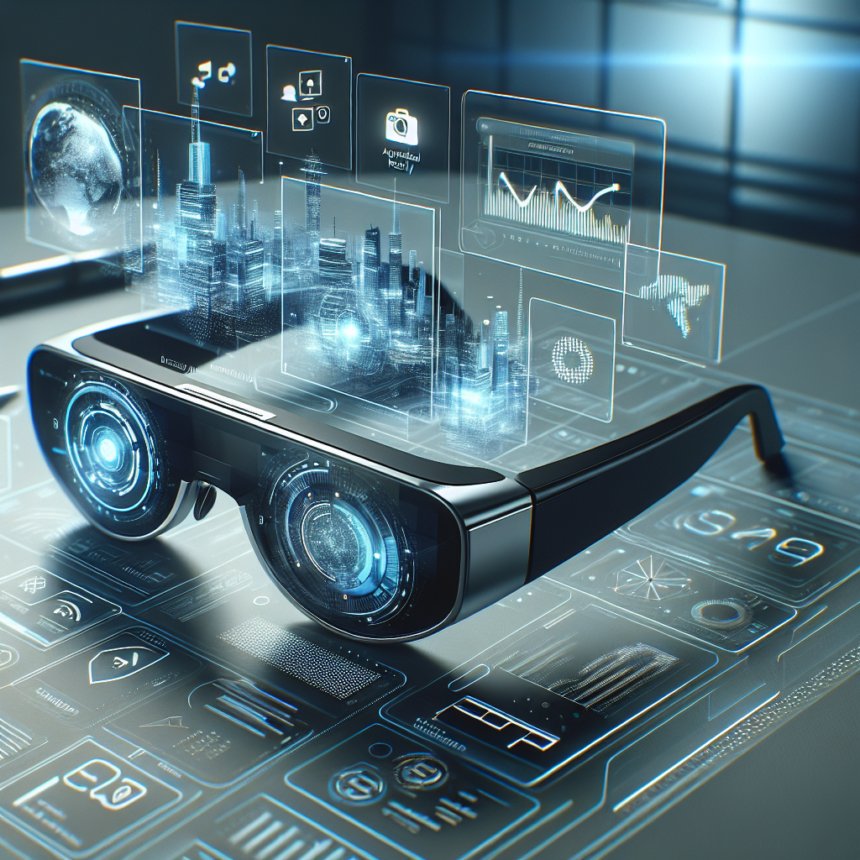As technology advances, the boundaries between the physical and digital worlds continue to blur, creating an ever-evolving landscape of opportunities. One of the most groundbreaking developments in consumer electronics is the rise of smart glasses, which are revolutionizing the way we interact with augmented reality (AR). This fusion of hardware and software has the potential to transform various aspects of our lives—ranging from entertainment and education to enterprise solutions and healthcare.
What are Smart Glasses?
Smart glasses are wearable devices that integrate AR technology into a lightweight, often stylish pair of eyewear. Equipped with displays, cameras, and sensors, smart glasses can overlay digital information onto the real world. They allow users to experience a rich, contextual layer of information—making it easier to engage with their surroundings in ways previously unimaginable. As they become more prevalent, they are changing not just the way we perceive the world, but also how we interact with one another.
Enhancing Everyday Experiences
Imagine walking into a new city and having directions projected right in your field of vision, or attending a seminar where pertinent information is instantly visible without needing to glance at a smartphone or laptop. Smart glasses can bring efficiency and convenience to everyday tasks. For instance, users can access notifications, answer calls, and even control smart home devices—all hands-free.
In retail spaces, smart glasses can revolutionize the shopping experience. They can guide customers to favorite products, provide detailed product information, and even suggest complementary items based on user preferences. Retailers can enhance customer engagement while streamlining operations, improving sales through technology that makes shopping more intuitive and enjoyable.
Transforming Industries
The impact of smart glasses is far-reaching, proving particularly transformative in industries such as healthcare, entertainment, and education. In healthcare, wearables can assist surgeons with real-time data during operations, enhancing precision and minimizing risks. Augmented reality applications can provide step-by-step instructions directly in the surgeon’s line of sight, ensuring they have the information they need to make critical decisions during intricate procedures.
In the realm of education, AR-enabled smart glasses can revolutionize how students absorb information. Imagine biology students observing a 3D model of a cell while understanding its functions contextually or history students interacting with significant historical events right from their classrooms. This engagement fosters deeper understanding and retention, transforming traditional educational methodologies.
Entertainment is yet another area benefitting from smart glasses. Imagine attending a live concert where artists appear to interact with a digital layer, or participating in games where the physical world and digital enhancements meld seamlessly. Sports viewing can also transform; statistics and real-time data could be overlaid onto the field, giving fans a new perspective on the game while deepening their experience.
Overcoming Barriers
While the prospects of smart glasses are exciting, the technology is not without its challenges. Concerns around privacy, data security, and user acceptance all need to be addressed for widespread adoption. The industry must ensure that users feel comfortable wearing these devices in public without fearing for their privacy. Furthermore, integrating smart glasses into everyday life will require user-friendly interfaces and experiences that make the technology not just accessible but enjoyable.
As manufacturers continue to innovate, affordability remains a crucial aspect. The goal is to create smart glasses that are not only technologically advanced but also economically viable for the average consumer. With more investments in AR technology, we may soon see a proliferation of resources to make smart glasses more affordable.
The Future of Smart Glasses
As we step further into the future, smart glasses are poised to become an integral part of our lives. With advances in technology, from improved battery life to better user interfaces, we can expect AR experiences to reach new heights. The fusion of AI, machine learning, and AR will likely lead to an even more personalized experience for users.
In conclusion, smart glasses are revolutionizing the augmented reality landscape, improving everyday tasks, transforming industries, and changing how we engage with information. As enhancements continue, the future appears bright for these innovative devices.
FAQs
1. What are smart glasses?
Smart glasses are wearable devices that use augmented reality technology to overlay digital information onto the real world, allowing users to interact with their environments in novel ways.
2. How do smart glasses work?
Smart glasses typically use built-in displays, cameras, and sensors to collect data and project relevant information onto the lenses, enabling users to see digital content alongside real-world objects.
3. What are the benefits of using smart glasses?
Smart glasses can enhance convenience, improve educational experiences, provide advanced healthcare solutions, and transform leisure activities through engaging interfaces.
4. Are smart glasses safe to use?
Smart glasses can raise privacy concerns; therefore, it’s essential to ensure that users feel secure about data collection and how it is used. Manufacturers and developers must prioritize security and user trust.
5. When can we expect widespread adoption of smart glasses?
While many developments are promising, widespread adoption will depend on advancements in technology, affordability, and how effectively manufacturers address privacy and usability concerns.








